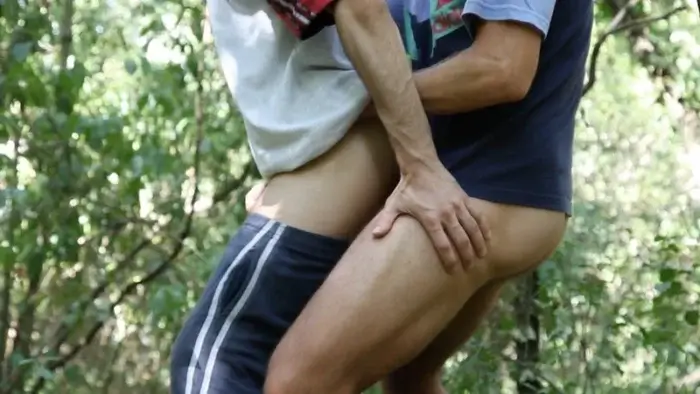Gay cruising, also known as battuage, is a complex phenomenon rooted in the history of the LGBTQ+ community. It refers to the practice of seeking casual sexual encounters in public places, often outdoors and secluded.
In this article, we will explore the history, meaning and cultural implications of gay cruising, diving into an often overlooked aspect of queer culture.
What is gay cruising, or battuage?
Gay cruising is a form of socializing and searching for sexual partners that takes place in specific places known as “cruising grounds.” These places can be parks, beaches, public restrooms, highway rest areas or any other secluded place where people can meet discreetly.
Gay cruising can involve a variety of activities, from simple exchange of glances and nonverbal signals, to more explicit conversations and sexual encounters. Importantly, gay cruising is not necessarily synonymous with casual sex; it can also be a way to socialize, make connections, and find companionship.

History of gay cruising
Gay cruising has a long history dating back to ancient times. In many cultures, public places such as bathhouses and marketplaces were known to be meeting places for homosexual men. However, with the advent of industrialization and urbanization, gay cruising began to shift to parks and other urban public spaces.
Throughout the 20th century, gay cruising became an important aspect of queer culture, especially at a time when homosexuality was stigmatized and criminalized. Cruising venues offered a safe haven where LGBTQ+ people could meet and express themselves freely, away from the judgmental eyes of society.
Meaning and culture of gay cruising
Gay cruising has deep meaning for many LGBTQ+ people. For some, it is a way to explore their sexuality, experiment and find partners. For others, it is a way to socialize, make connections and feel part of a community.
Gay cruising also has a rich culture associated with dress codes, nonverbal signals, and specific meeting places. This culture is often passed down from generation to generation, creating a sense of continuity and belonging.

The implications of gay cruising
Gay cruising is a complex phenomenon with social, cultural, and legal implications. On the one hand, it offers an important space of freedom and expression for LGBTQ+ people, especially in contexts where homosexuality is still stigmatized. On the other hand, gay cruising can be associated with risks such as transmission of sexually transmitted diseases and violence.
The AIDS crisis has led to increased awareness of the risks associated with gay cruising and has prompted the community to rethink its sexual practices. Condom use has become crucial for prevention, and awareness campaigns about the importance of sexual health have been promoted.
In addition, gay cruising is often the subject of public debate and legal controversy. In some places, it has been criminalized or restricted because of public safety or morality concerns. However, many LGBTQ+ activists argue that gay cruising is a legitimate form of expression and that criminalization only pushes the practice into the shadows, making it more dangerous.
Cruising and the spread of AIDS
The AIDS epidemic of the 1980s had a devastating impact on the gay community, particularly those who practiced cruising. Cruising venues, often characterized by casual, unprotected sexual encounters, became hotbeds of infection, fueling the spread of the virus.
At the same time, the epidemic has had a negative impact on cruising venues, which have often been stigmatized and closed by authorities more concerned with cracking down on same-sex encounters than promoting sexual safety. This situation led to a decrease in traditional cruising and prompted the community to seek safer alternatives.

The evolution of Cruising in the digital world
Technological developments, particularly the advent of the Internet and dating apps, have provided new opportunities for gay cruising. Online platforms have allowed people to connect, communicate, and arrange encounters in a more discreet and safe manner, reducing some of the risks associated with traditional cruising.
However, technological evolution has also led to new challenges. Online anonymity can foster irresponsible behavior and increase the risk of sexually transmitted infections. In addition, dependence on technology can lead to a decrease in face-to-face social interactions and a loss of the sense of community that characterized traditional cruising.
Despite the challenges, technological evolution has allowed gay cruising to adapt and survive, providing new opportunities for sexual connection, exploration, and expression. The LGBTQ+ community has demonstrated extraordinary resilience, turning the tragedy ofAIDS into an opportunity to promote sexual health, awareness, and inclusion.
Today, gay cruising continues to evolve, adapting to new technologies and the changing needs of the community. It is important to remember that cruising, like any other form of sexual expression, should be practiced in a safe, conscious and respectful manner.
Some features of the LGTBQ+ battuage
- Theimpact of the internet and dating apps: The advent of the internet and dating apps has radically transformed the way people meet and relate, including gay cruising. While some argue that technology has made cruising safer and more accessible, others lament the loss of the human contact and spontaneity that characterized traditional cruising.
- Gay cruisingand safety: Gay cruising can pose safety risks, such as transmission of sexually transmitted diseases and violence. It is important to promote safe and informed sexual practices and create safer and more inclusive meeting spaces.
- Gay cruising and cultural representation: Gay cruising has been represented in various art forms, from literature to film, often in controversial and debated tones. Analyzing these representations can help to better understand the evolution of the perception of gay cruising in society.
- Gay cruising and gentrification: In some cities, gentrification and urban redevelopment have led to the closure or transformation of places traditionally used for gay cruising. This phenomenon raises important questions about the preservation of LGBTQ+ historical and cultural memory and the right to use public space.
- Gay cruising and the future: The future of gay cruising is uncertain. As technology continues to transform the way people meet, traditional cruising may evolve or even disappear. However, it is likely that the desire for connection, exploration, and freedom that has always characterized gay cruising will continue to find new forms of expression.
- Ethical debate: Gay cruising raises important ethical issues related to privacy, consent, and safety. It is critical to promote open and respectful dialogue on these issues in order to create a safer, more informed, and inclusive culture of gay cruising.
Discover our Grindr tricks to optimize searches and find the right partner faster or discover our best LGBTQ+ guides for meeting services and gay clubs.
Gay Cruising and Battuage Areas
These are additional places you may be interested in. It is important to remember that the situation can change over time and that it is essential to exercise precautions and comply with local laws when diving in these activities.
Also, related to gay cruising, or rather as alternatives, you may also find of interest these guides:
- Best Gay Cruising Clubs and Bars in Italy
- Carsex: Best places in Italy to do it
- Best sites to meet swinger couples
- Best Swinger Clubs in Italy
Find more resources on Italian Gay Cruising in the appropriate section.



